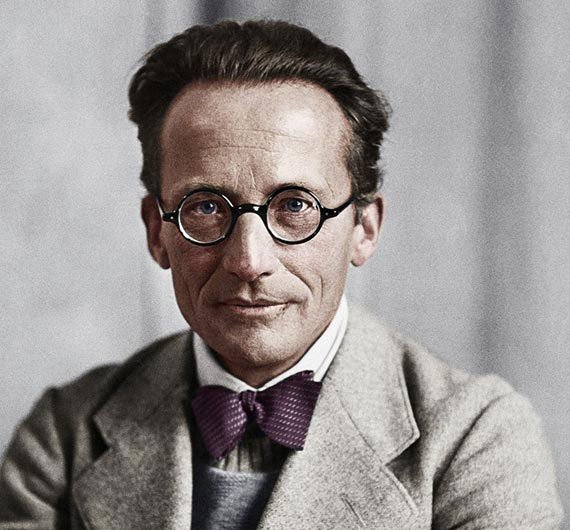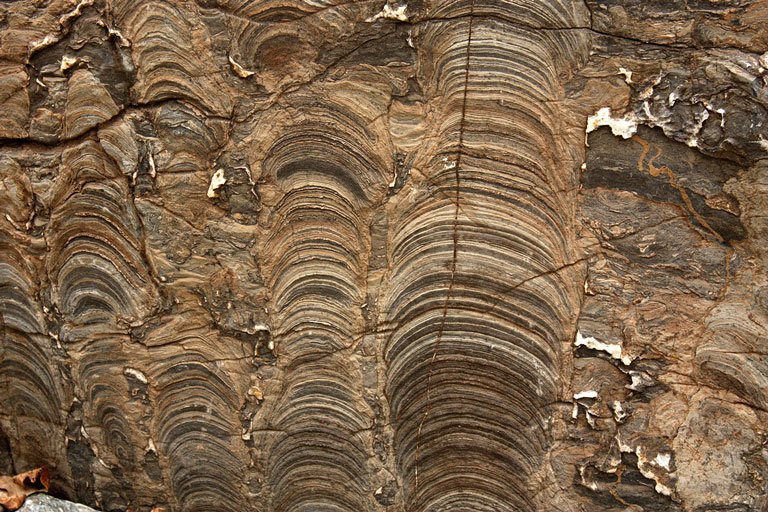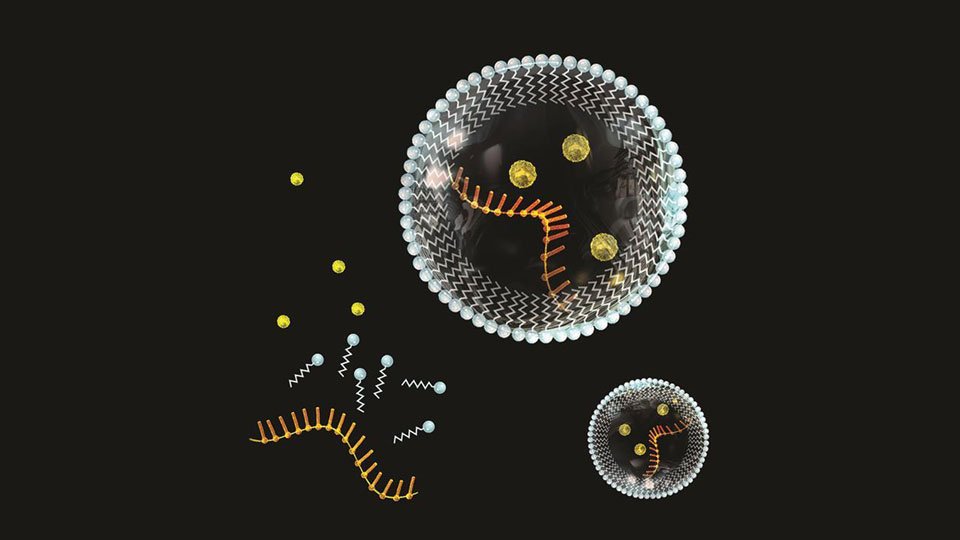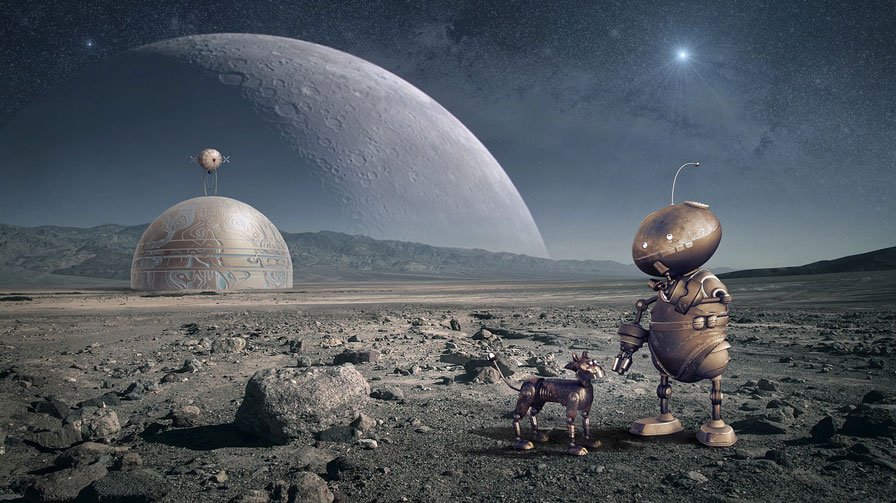Hey friends, I am back with the #2 Episode of Simple Question Series. Sorry for little delay as it took me a lot of time to research about the topic. I tried to bring the best I could. I hope you'll enjoy it. So, let's begin. :)

What is the difference between you and a rock? You may think what a stupid question am I asking. But even the smartest people in this planet have no idea where to draw the line between living and dead things. This leads to many mind-blowing speculations. What is life after all?
What is Life?
You are alive and so am I. The tree outside the window is alive. The bird chirping on the tree is alive. But the clouds in the sky are not alive, the laptop or smartphone on which you are reading this article is not alive. So how can we say that anything is alive or not? In most of the cases our intuition gives us the correct answer. And in some cases (like viruses) even science fails to tell correctly whether something is alive or not. So it becomes really difficult to figure out an exact definition of life. Thus, researcher Christopher Voigt of University of California says,
"We don't have a very good definition of life".
The question, "What is life?" has troubled the scientists and philosophers through ages.
Aristotle was probably the first person who made an attempt to define life. He suggested that life is something that grows and maintains itself and reproduces.

Erwin Schrödinger
Austrian physicist, Erwin Schrödinger in his book, "What Is Life? The Physical Aspect Of The Living Cell", suggested that living things avoid decay into disorder and equilibrium. His idea is related to the second law of thermodynamics which states that every closed system will naturally gain entropy or disorder over time. But by utilizing nutrients from the environment and metabolizing them, living things can work against this trend and can maintain order (low entropy) inside.
But what about crystals of snow and other materials, which absorb energy to create order in their structure? Are they alive?
This is the issue which persists in almost all the current definitions. There are many exceptions and contradictions in them.
For example, some researchers have proposed that we may call a thing living if it can reproduce. But this theory excludes Mules, which are born sterile, and will include non-living things like fire which can grow and reproduce by creating more fire.
Many others have claimed that life is what that can metabolize - that it can take in energy and nutrients, carry out some complex chemical reactions, which will result in movement, growth, waste release etc. - but many non-living things like cars, fire show similar properties.
These loopholes are making the scientists and researchers more confused. They are unable to accept any of the proposed definitions.
As biochemist David Deamer points out,
"Life, because it is such a complex system of things with many interacting parts, each of which is essential, it is really tough to make a definition".
Even after these difficulties some scientists are not ready to give up. They say that as we are aware of only one type of life form, that is of Earth, so it is becoming difficult to find a universal definition of life. Even if we make a working definition on the basis of properties of life available on Earth, we may not be able to identify life on other planets.
Probably we may get some idea about life and the basic elements required for its existence if we study the origin of life on earth.
How Did Life Originate and Why?

Stromatolites: fossilized earliest microorganisms
By measuring the ages of the oldest rocks on Earth, ages of Moon rocks and meteorites, geologists have suggested that Earth was formed around 4.5 million years ago. But still scientists are unsure when and how life emerged on the Earth. There are plenty of ideas but few clear facts.
It is generally believed that the all life forms that we see today emerged from a single primitive ancestor. But it is not known how this primitive life form came into existence, however, scientist believe that it was a natural process which took place perhaps 4.2 billion years ago. And it is also speculated that the first life form was originated underwater.
Earliest records of life forms are found in the form of fossilized microorganisms. Recently such fossils have been discovered in iron and silica rich rocks of Quebec, Canada. They are found to be 4.28 billion years old while it is found that oceans came into existence 4.4 billion years ago. This shows that the emergence of life was almost instantaneous after the formation of oceans. Thus it may be possible that if life emerged so quickly on Earth, then it must be a common thing in the universe.
Many theories have been proposed to explain the 'origin of life'. In the 1920's, two scientists, Aleksander Oparin and J. B. S. Haldane separately came up with a similar theory, which is now popularly known as Oparin-Haldane hypothesis. According to this hypothesis, life on earth could have originated from non-living matter through a process called "gradual chemical evolution".
In the then oxygen-poor atmosphere of the Earth, simple inorganic molecules may have reacted with energy from sunlight or lightning to form building blocks of life, like amino acids and nucleotides which could have accumulated in the oceans, forming a "primordial soup".
These building blocks may have further reacted with each other to form more and more complex molecules (polymers) such as proteins and nucleic acids. And these complex polymers may have come together to form a closed structure to maintain homeostasis which have later on become capable of metabolism.
In 1953, an experiment was carried out by Stanley Miller and Harold Urey to test the Oparin-Haldane hypothesis. They found that organic compounds could be created from the inorganic matter as suggested by Oparin-Haldane hypothesis. They created a closed environment similar to the early earth and simulated the effect of energy (like lightning) on the environment through electric sparks. They ran the experiment for a week and found that various types of amino acids, lipids, sugars and other organic molecules had formed, which are the building blocks for other complex organic compounds like protein, DNA, RNA etc.

Primitive structure of the first Cells
Recently, a young physicist of MIT, Jeremy England has proposed that living things are better in absorbing and using energy from the environment and dissipating some part of that energy as heat, than inanimate clumps of carbon atoms. He has developed a mathematical formula which indicates that when a group of atoms is driven by an external source of energy (like sunlight, heat, electricity, chemical fuel etc.) and surrounded by a heat bath, like ocean or atmosphere, then it will automatically restructure itself in such a way that it dissipates increasingly more energy. This suggests that under certain conditions matter inevitably acquires the basic physical and chemical features associated with life.
Thus England remarks,
"You start with a random clump of atoms, and if you shine light on it for long enough, it should not be so surprising that you get a plant".
Even though we have got some idea about how the basic organic compounds came into existence, but still scientists are unsure which complex molecule (polymer) first came into existence that became self-replicating or self-perpetuating, meeting the basic criteria for life.
Many scientists support the RNA-world hypothesis (or genes-first hypothesis), according to which first life forms were self-replicating RNA which contained the genetic information, and other things like metabolism were a letter add on.
Another cult of scientists favors the "metabolism-first hypothesis" which suggests that self-sustaining networks of metabolic reactions may have been the first simple life forms (preceding the emergence of RNA or DNA).
Whatever may be the first compound it was still very much primitive and simple as compared to the complex life forms of today. The arrival of human beings was not an easy way and took a very long process which continued for billions of years. Did these complex organisms emerge from a primitive ancestor?
How Did Complex Life-Forms Emerge?
As we discussed, the first step for life was the formation of simple organic compounds which later on combined to form such complex compounds which could contain genetic code and maintain metabolism. The first such self-sustaining structure which might be said to have had life was "cell".

Cell-division
Cell is called the fundamental unit of life as all the life forms, from simple to highly complex, are made up of cells. A cell contains all the basic characteristics of life. It is basically a protein based robot, too small to feel and experience anything. A cell is surrounded by a wall or membrane which separates its inner constituents from the outer world and maintain a constant inner environment (homeostasis) favorable for metabolic reactions to take place. A cell is also capable of reproducing by performing the process of cell-division.
The early cell that came into existence was very much primitive and simpler. It may not have had developed cell wall at that time. Cell wall may have been developed later on to carry out metabolic process more efficiently. Similarly, different cell organelles like ribosome, vacuole, lysosome, nucleus etc. may also have been developed gradually as per requirement in the later generations of the cell. These unicellular life forms (cells) later on multiplied and combined to form multicellular organisms which wear more accustomed to survive and dominate in the contemporary environment.
This change continued through billions of years, which resulted in the formation of this vast biodiversity we are a part of. This process of change is called "evolution".
All the living organisms undergo evolution, which means that their genetic code get slightly modified to add or remove characteristics, whatever maybe suitable for the environment. It mostly follows the Darwinian theory of "Natural Selection". According to this theory, organisms which could develop such traits which are crucial for survival in an environment would live and the organisms which could not develop such traits would eventually die. So, the population of the biologically superior species would dominate. Darwin called this process "survival of the fittest".

Blue Whale - an example of a complex organism
Evolution is a continuous never ending process. So, are humans still evolving? The answer is 'Yes', evolution is going on slowly but steadily, generation after generation. Probably after thousand years from now humans shall have a more powerful brain.
But there is an inherent and most important purpose of the origin of life and the process of evolution – hidden in the second law of thermodynamics. Read on to find out.
What is the purpose of life?
This question is an important one and has been answered in different ways. In spiritual point of view, the purpose of life is to be blissful and to worship the divine, the attainment of 'moksha' through enlightenment. From social and moral point of view, the purpose of life is to be a good human being, to work for the betterment of the human civilization.
But being a person with scientific temperament, I would like to find the scientific purpose of life which relates to the existence of the universe.
So, what if I say, "the purpose of life is to carry out a mission". All living creatures, from cats and dogs to human beings, are on a mission – to fulfill the second law of thermodynamics.
There is a high tendency in the universe increase entropy (disorder) and the free (low entropy) energy to be used up to release high entropy energy. The early Earth was packed with low entropy conditions, with a lot of available useful energy. But there was no way to tap into that useful energy.
It required a bunch of very complex reactions to take place to actually use that useful energy. This process led to the formation of some complex compounds which could carry out the system of reactions more efficiently and easily. This eventually kept on creating more complex systems and finally formed a living cell.
A cell could use more of that useful low-entropy energy to maintain its inner order and release less useful high-entropy infrared light and heat energy, thus taking part in the process of increasing the entropy of the universe. A cell could also multiply to make more of it which could take part in the great mission.
And this is how evolution took place and complex multicellular organisms came into existence which could help in the entropy increase in much larger amount.
Even the stars, e.g. our Sun takes low entropy Hydrogen atoms and convert them into Helium and releases a large amount of heat and light energy with higher entropy. And we living organisms on Earth, take that heat and light energy, use that for our biological purpose and release even higher entropy infrared light. So, it may be said that we are on a mission to increase the entropy of the universe just like the stars do.
Conclusion
We saw that how it's difficult to understand life and draw a line between living and non-living things. But still we can make guesses on the basis of some characteristics of the living creatures like metabolism, reproduction and most importantly evolution.

Biological Virus
But sometimes, things like viruses make the scene more complicated. Viruses show all the properties of non-living things when they are alone, but when they enter any living host, they become alive and start showing all the characteristics of a living creature. Some viruses are such that they can enter dead cells and reanimate them so that they can become host for them, which is very weird. Virus is probably a transition between living and dead.
Hence, some scientists like Cleland points out that definitions and not the right way to go. We are unable to define life because we are lacking in theories. Like for example, early scientists tried to define water before they understood chemistry. It was just after the discovery of the elements Hydrogen and Oxygen, that the scientists were able to find out water is a compound of the two.
However, the ideas of the origin of life have revealed much about it. It has thrown light on the fact that life is not a rare phenomenon and has very less to do with luck. Life was originated from simple non-living matter through an inevitable natural process. The basic constituents of life include energy, Carbon, liquid water, and a few other elements like Nitrogen, Sulphur and Phosphorus.
But, recently a type of bacteria was discovered which could use arsenic in place of phosphorus to build its DNA. This discovery gives rise to the speculations that life may arise on other planets which have plenty of useful energy, even with other elements and constituents, which can work for the universal purpose of increasing entropy.
Thus, NASA defines life as
"a self-sustaining system capable of Darwinian evolution".
This definition opens the doors too many more possibilities of the existence of life. Probably we may find extraterrestrial life without knowing what it is!
Wait! Before going to the outer space in search of life, we much check out our computers. A physicist once said that life started with a simple code which gradually became complex through evolution. Well, this is somewhat analogous to a computer program. For example, a computer virus is capable of replicating itself by using its host computer's energy. You may argue it to be alive! And with a going on research on Artificial Intelligence and with the advent of Google's Machine Learning Program, maybe we are on the verge of creating artificial life in computers.

Artifical Life - an imagination
Image Source: Pixabay | Pexels | Google Public Domain Images
What do you think about life? Any new theory or idea related to our existence you want to share. Do let me know through your comments.
Your feedback and suggestions are important for me.
Thanks.
